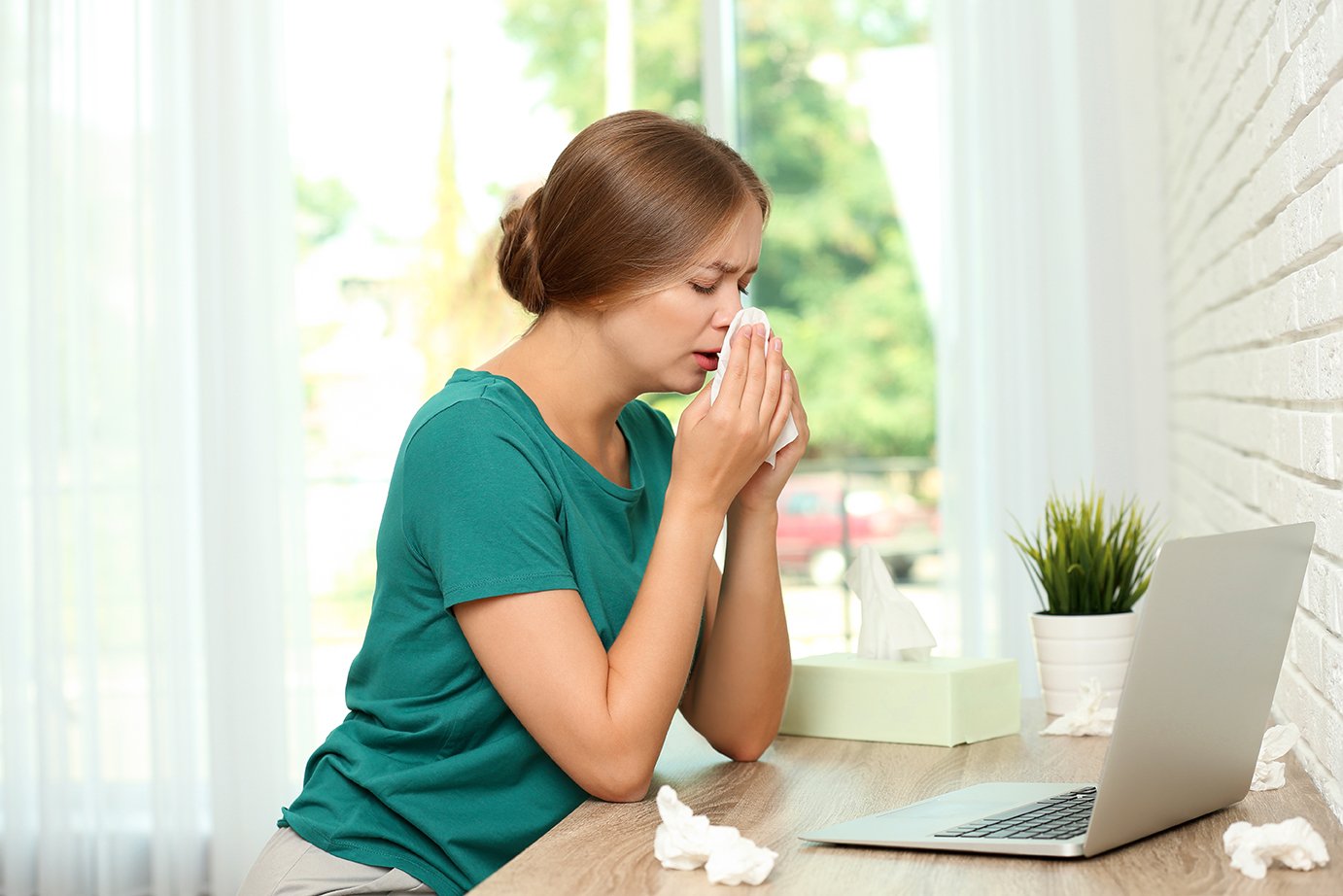For people who live with warm-weather allergies, the end of summer brings welcome relief from itchy, painful and sometimes exhausting symptoms. But for many, allergies can be just as troublesome in the fall as the season ushers in an entirely different array of allergens, along with allergy triggers and symptoms.
You can’t completely eliminate fall allergens or cure their effects, but there are ways to manage, relieve and avoid symptoms.
Common fall allergens
From irritants blowing in the wind to miniscule bugs lurking in your home, here are the most common fall allergens:
- Ragweed. About 75% of people who experience springtime allergies also have an adverse reaction to ragweed, the biggest fall allergen culprit of them all. A single ragweed plant can produce up to a billion grains of pollen per season.
This flowering weed starts to bloom and release pollen in the warm days and cool nights of August but can last well into September and October until the first freeze. Ragweed grows across the country but is most prevalent in rural parts of the East and Midwest. Even if you don't live in an area where it commonly grows, you may still be affected by the allergen as the wind can easily spread the pollen.
- Mold and mildew. Mold and mildew grow from and produce spores spread by outdoor wind or indoor air, so these fungi can cause problems wherever you are. While they tend to grow year-round, they thrive in the fall.
Outside, mold and mildew flourish on soggy fallen leaves and compost piles. Inside, mold and mildew prefer damp areas like bathrooms, kitchens and basements. They usually go dormant during winter months, but not even the first frost will kill them completely.
- Dust mites. Indoors, these microscopic arthropods feed primarily on flakes of human skin naturally shed around the home. Dust mites are a year-round allergen but thrive in temperatures between the high 60s and mid 70s, making them more of a problem in the fall. Winter months can bring some relief, since dust mites typically die in extreme temperatures or when the humidity falls below 70%.
- Pet allergens. About 40% of people with seasonal allergies also have pet allergies triggered by fur, saliva, dander or urine. As windows and doors are closed against fall’s chill, pet allergies may increase.
Seasonal allergy symptoms
Common symptoms of fall allergies include:
- Runny nose
- Nasal congestion
- Sneezing
- Watery, itchy or irritated eyes
- Itchy throat
- Hives or rashes on the skin
- Headaches
- Aggravated asthma symptoms, such as coughing or wheezing
- In severe cases, trouble breathing or anaphylaxis (a life-threatening allergic reaction)
Fall is also the beginning of cold and flu season. And with the spread of COVID-19, it may be tricky to tell if your symptoms are seasonal or something more serious, since many symptoms overlap. If you have a cough, fever or shortness of breath along with the above symptoms, fall allergies are likely not the root of the issue.
If you’re concerned, book an appointment at your nearby Indigo Health. You can also take a quick online assessment using Indigo Urgent Care’s Coronavirus Assessment Tool, or have an e-Visit with an Indigo Online Care provider to determine your risk and whether you need to be referred to a testing site.
Treatment options
There’s no cure for fall allergies, but there are medical treatments to help lessen your symptoms and provide relief. Your primary care or Indigo Urgent Care medical provider can help determine which allergens are likely causing your symptoms, recommend the most beneficial treatment and prescribe medication, if needed.
There are several over-the-counter medications that may bring relief. Decongestants help dry up mucus and ease nasal stuffiness, while antihistamines can put an end to sneezing, sniffling and itching.
If necessary, your provider may prescribe a steroid nasal spray to reduce inflammation in your nose or start you on immunotherapy (oral tablets or allergy shots) to help relieve symptoms.
Managing symptoms
While medical treatment can be helpful, it’s most effective when combined with sensible symptom management techniques. Taking steps to avoid allergens is the best way to remove allergy triggers and alleviate symptoms.
Keep tabs on pollen. Many local news websites and newspapers publish a daily pollen report so you to know when counts are at their highest. During these times, limit outings to early mornings or evening and try to stay indoors as much as possible.
To manage symptoms, keep home and car windows closed, and remove shoes and jackets before entering your home. Regularly vacuum carpets and upholstery, and wash clothes, linens and curtains. While keeping pollen in check, you’ll also help reduce allergens from pet fur and dander.
Tamp down mold and mildew. As fallen leaves pile up in the yard, so does mold and mildew. When doing yard work, wear a protective mask to prevent breathing in spores.
Indoors, use a dehumidifier to keep the air between 35% and 50% humidity. You can also prevent mold and mildew buildup in your house by cleaning bathrooms and kitchens regularly with vinegar or store-bought anti-mildew cleansers.
Diminish dust mites. Cleaning house isn’t always about what lies on the surface. To prevent dust mites from circulating indoors, clean air vents before temperatures drop and central heating kicks in. And to keep the pests out of the bedrooms, use dust-proof covers on mattresses and pillows and regularly wash bedding.
Find relief at Indigo Urgent Care
Managing fall allergies takes some thought, planning and action. If something in the crisp autumn air is causing you discomfort, visit your nearby Indigo Health for refreshingly fast and convenient care. We’ll get to the bottom of what’s causing your fall allergies, help with a strategy to manage your symptoms and get you back to enjoying the season.


